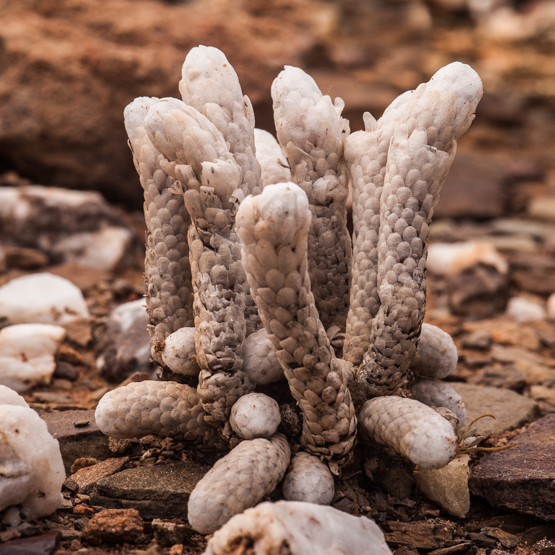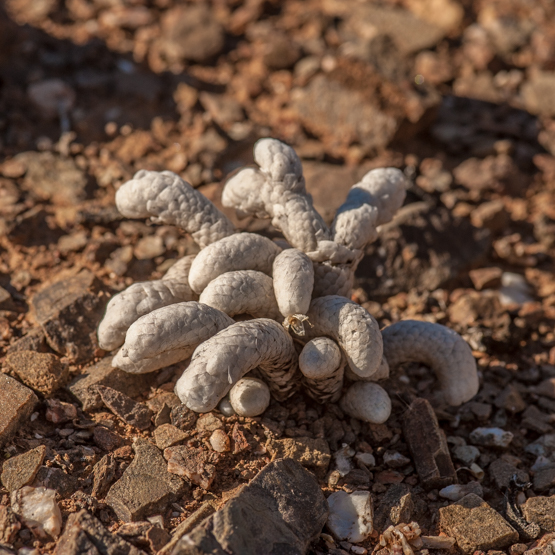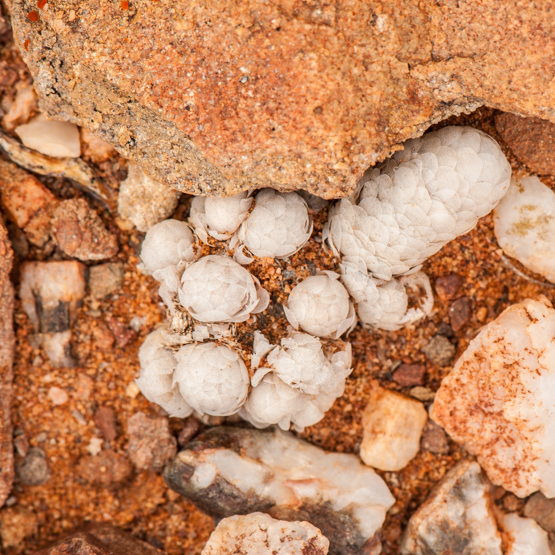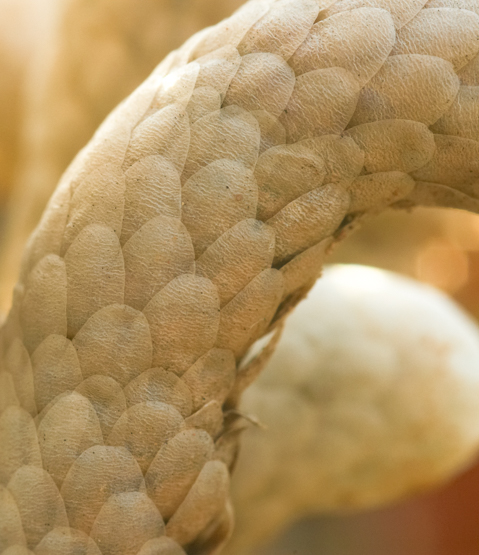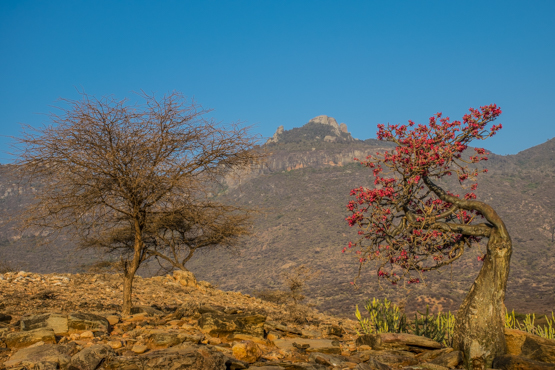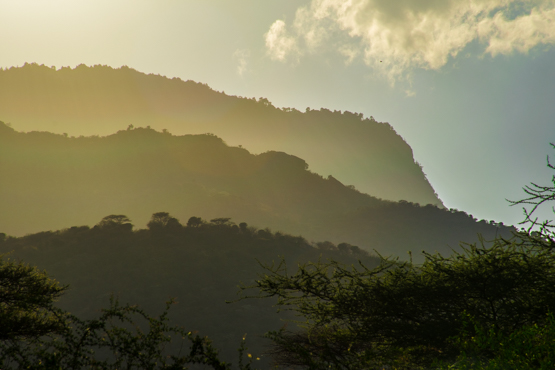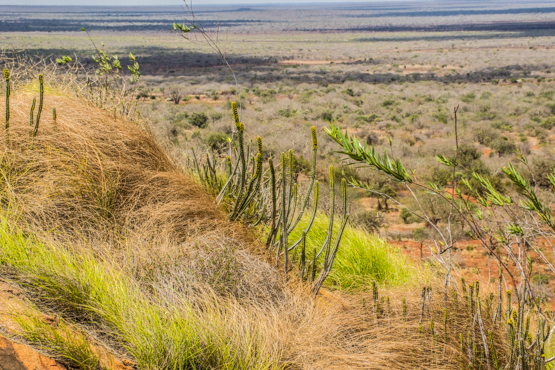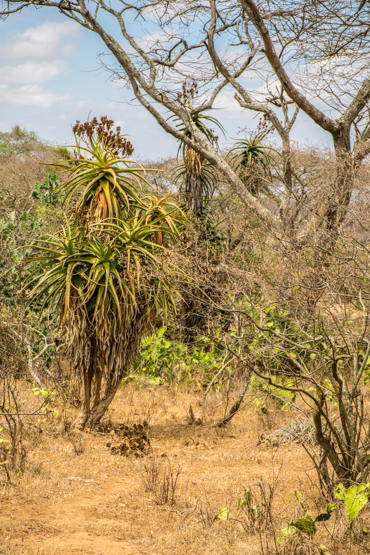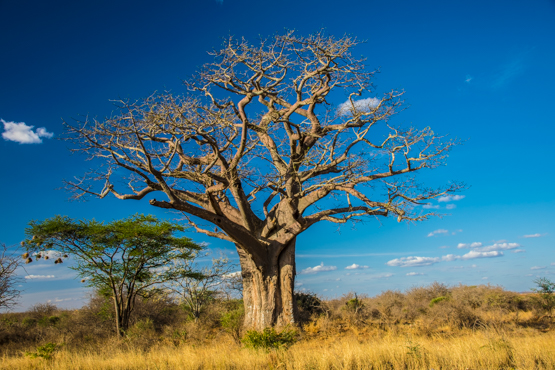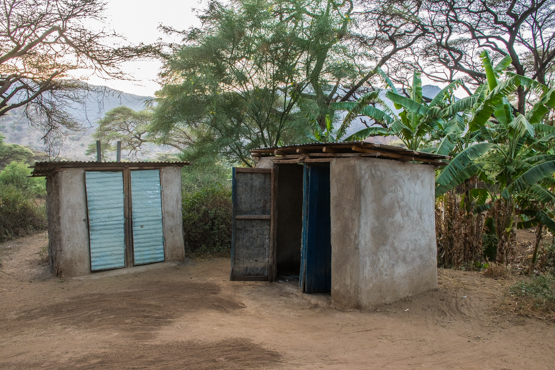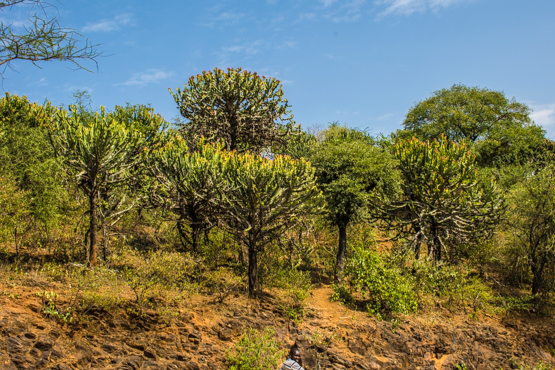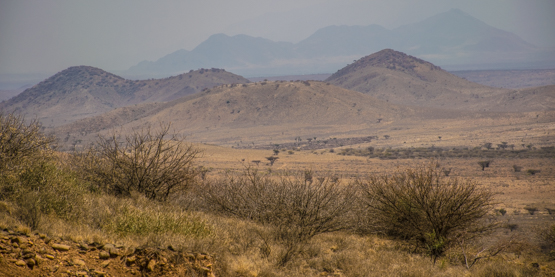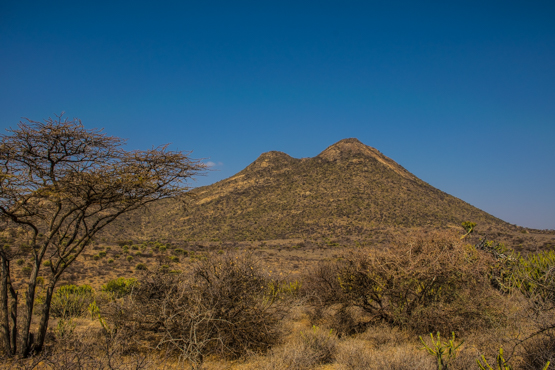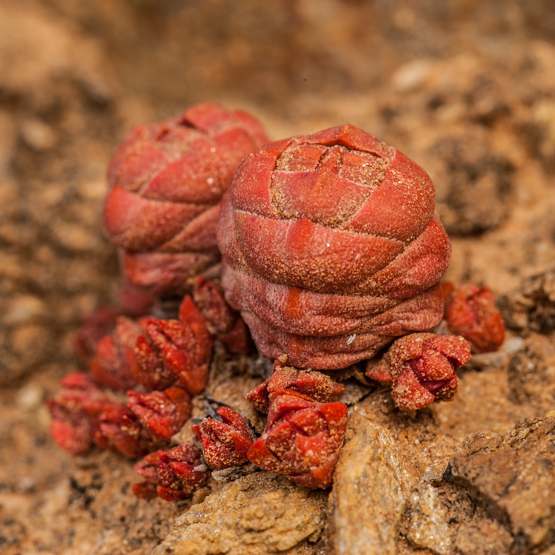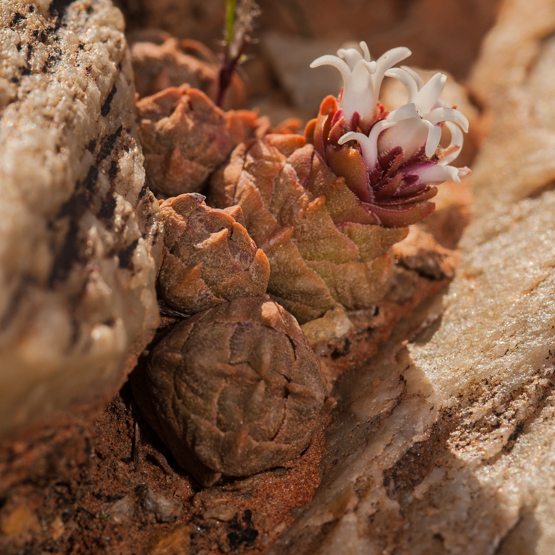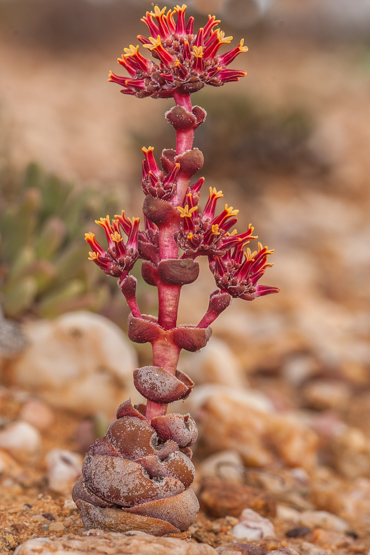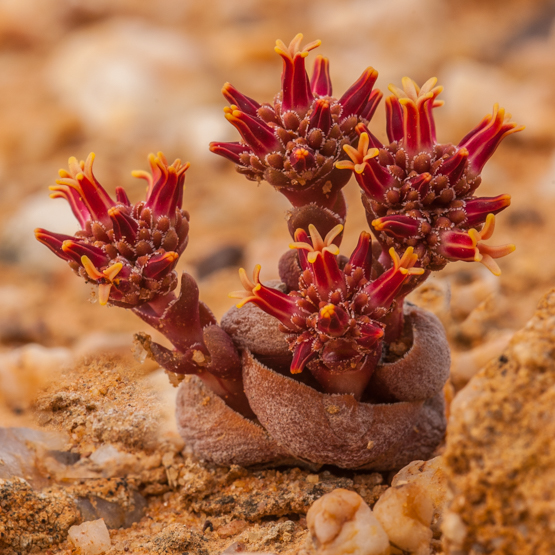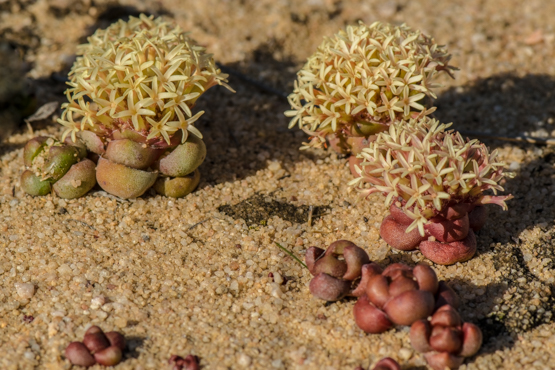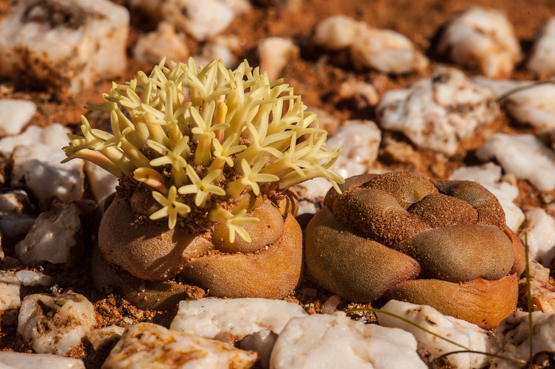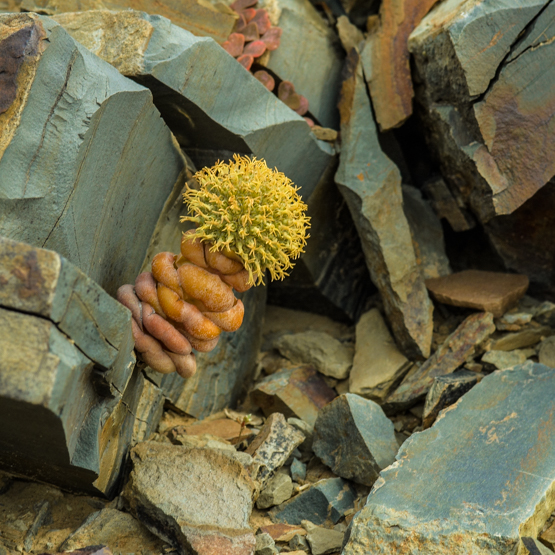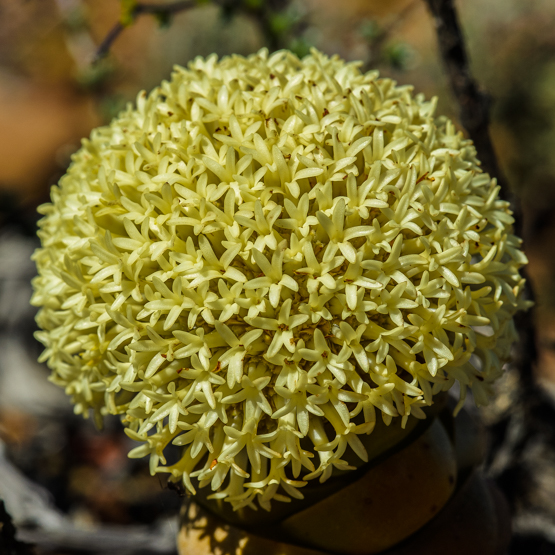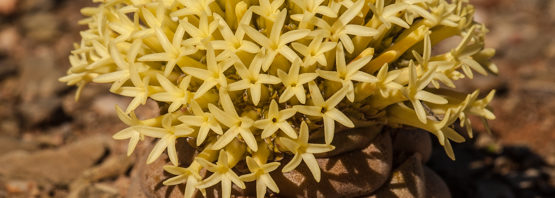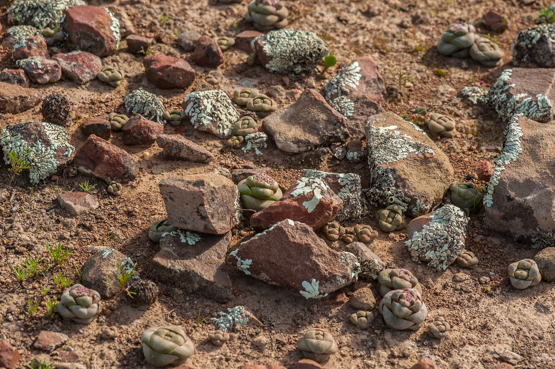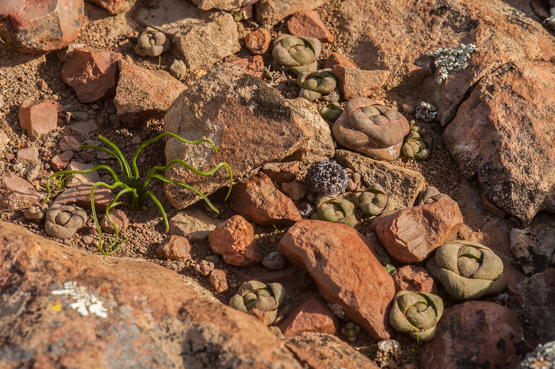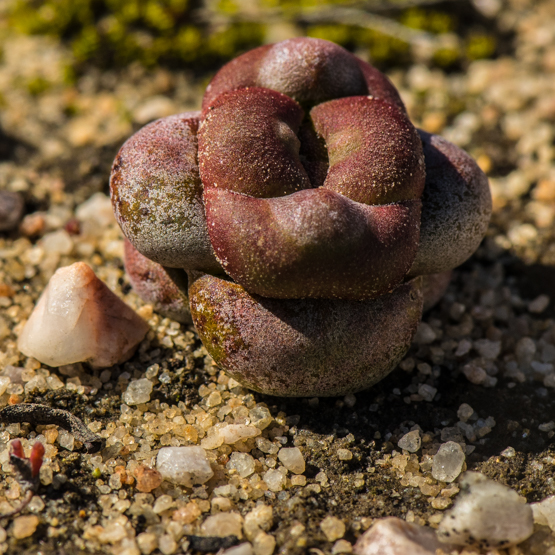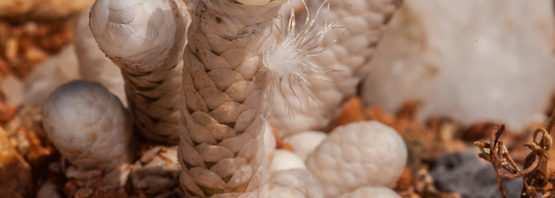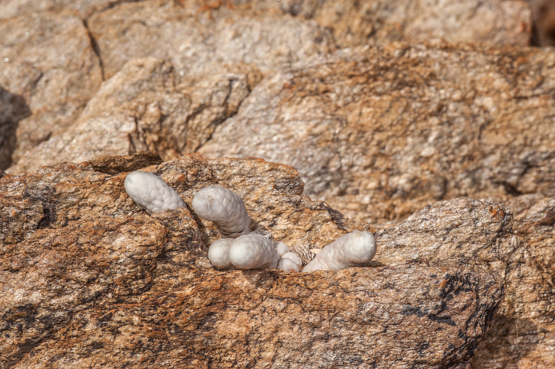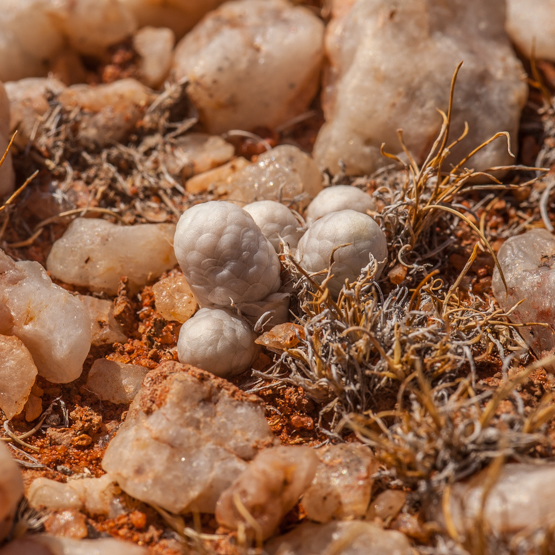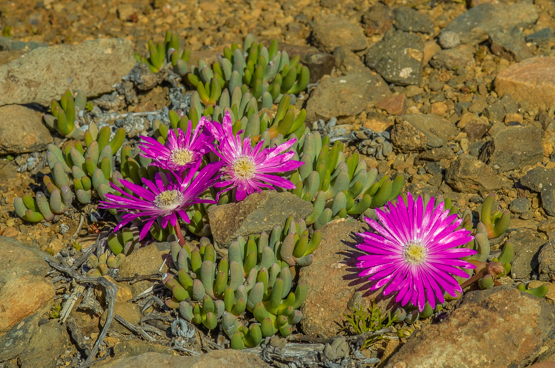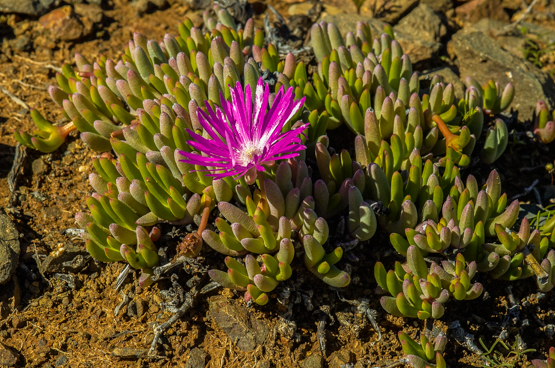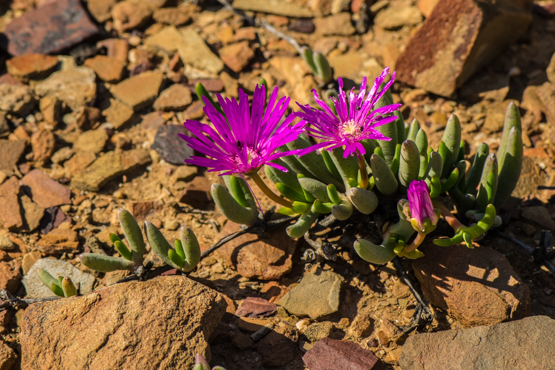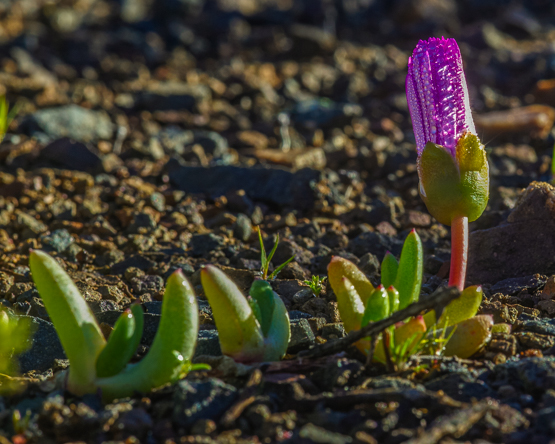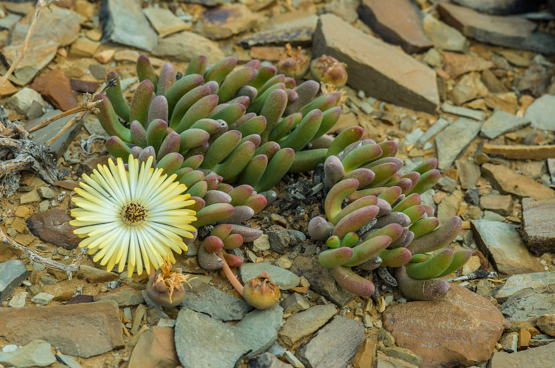Even if one has no knowledge of Latin, it is probably easy to understand that papyracea means papery. This refers to the thin, white scales that cover the stems.
These scales are in fact modified stipules: outgrowths of the base of the leaf stalk. By reflecting and diffusing light, they act as sunshades. This effect, combined with controlled aeration*, reduces evaporation. The scales are also able to trap dew.
*It has been noted that in hot, dry conditions the scales tightly overlap each other like roof tiles, whereas in cooler and therefore damper weather they can open out to some extent so that the leaves are more exposed.
As Gordon Rowley in “Anacampseros, Avonia, Grahamia” (1995) remarks, it seems surprising that such an efficient adaptation has, apparently, evolved only once.
The scales are about 5 mm long and wide and hide the minute leaves.
The stems are usually about 5-8 cm long and 0.7-1 cm thick, arising from a thickened tuber. As in other Avonia species, the stems that carry flower buds grow more or less horizontal, but become erect on the day of flowering and stay that way until the seeds have been dispersed.
The scented flowers are creamy white and appear in late spring and early summer.
There are two subspecies: subsp. papyracea occurs throughout the Little Karoo and is also found in the Great Karoo, whereas subsp. namaensis occurs in southern Namibia, the Richtersveld and Bushmanland. Both subspecies seem to feel most at home amongst white quartz pebbles.
According to the literature the main difference between the two is that in the first one, the edges of the scales are entire (without any teeth or other incisions) and in the second one saw-edged to toothed.
The following pictures show plants of subsp. papyracea.
